免費(fèi)的SCI論文基礎(chǔ)通用模板,拿走不謝!
時(shí)間: 分類(lèi):SCI論文百科 瀏覽次數(shù):
對(duì)科研小白來(lái)說(shuō),看到SCI期刊的各類(lèi)投稿要求,難免會(huì)比較頭大,但掌握基本規(guī)則,學(xué)習(xí)相應(yīng)的模板,也可以輕松應(yīng)對(duì)。所有SCI期刊基本是大同小異,基本的SCI論文結(jié)構(gòu)包括以下內(nèi)容:標(biāo)題、作者、摘要、關(guān)鍵詞、引言、方法、結(jié)果、討論、結(jié)論、致謝、參考文獻(xiàn)、表格、插圖等。
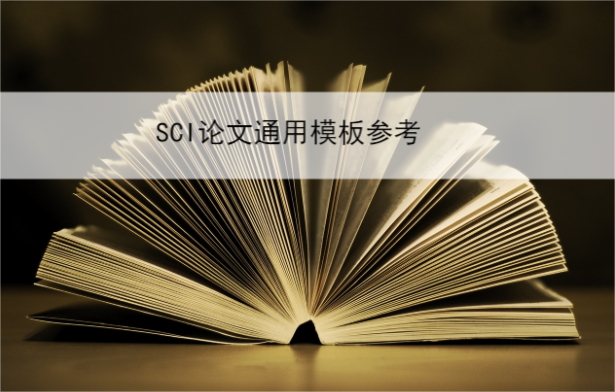
Title
[Titles do not exceed two lines in print. This equates to 75 characters (including spaces). Titles do not normally include numbers, acronyms, abbreviations or punctuation.]
經(jīng)驗(yàn)總結(jié): 標(biāo)題不要太長(zhǎng),注意盡量控制在兩行,大約75個(gè)詞以?xún)?nèi)(包括空格)。通常注意避免使用阿拉伯?dāng)?shù)字、縮寫(xiě)、縮略語(yǔ)、代號(hào)或標(biāo)點(diǎn)符號(hào)。
Author Information
[Authors' full first and last names and complete address information including city, zip code, state/province, and country must be provided. Ensure that the author order and all author information are correct. Updates to author information may not be permitted after submission or acceptance.
At least one author should be designated as the corresponding author. Authors who have contributed equally should be marked and stated.]
Firstname Lastname 1, Firstname Lastname 2, Firstname Lastname 2,*
1 Affiliation 1, City, State/Province, Country, Zip code
2 Affiliation 2, City, State/Province, Country, Zip code
* Correspondence: e-mail@e-mail.com
經(jīng)驗(yàn)總結(jié):必須提供作者的全名和姓氏以及完整的地址信息,包括城市、郵政編碼、州/省和國(guó)家。
確保作者順序和所有作者信息都是正確的。提交稿件、修改稿件過(guò)程中或通知文章接收后,也就是一旦投稿后,都盡量不要再增減或修改調(diào)整作者信息,否則有可能被拒稿。如果必須要進(jìn)行作者的相關(guān)調(diào)整,一定要有非常充足的支持理由,并且一定要提前跟編輯聯(lián)系溝通好,再進(jìn)行相關(guān)操作,切忌先斬后奏!
Abstract
[A pertinent overview of the work about 150-250 words, separated by the headings below:]
Background: Place the question addressed and highlight the purpose of the study.
Methods: Briefly describe the main methods or treatments applied.
Results: Summarize the article’s main findings.
Conclusions: Indicate the main conclusions or interpretations.
經(jīng)驗(yàn)總結(jié):對(duì)論文研究?jī)?nèi)容的總體概述,約150-250個(gè)詞,按以上四大塊標(biāo)題內(nèi)容分開(kāi)來(lái)寫(xiě)更容易:研究背景、方法、結(jié)果發(fā)現(xiàn)、主要結(jié)論。大部分期刊對(duì)摘要的要求是一段150-250詞的段落,但有一些期刊的要求比較特殊(比如BMC系列期刊),它們的摘要由Background,Results,Conclusions三部分構(gòu)成。
Keywords
[List 3-10 pertinent keywords specific to the article yet reasonably common within the subject discipline.]
keyword 1; keyword 2; keyword 3; keyword 4; keyword 5
經(jīng)驗(yàn)總結(jié):列出3-10個(gè)文章內(nèi)容相關(guān)的關(guān)鍵詞,在該學(xué)科中比較常見(jiàn)的、容易被檢索到的,關(guān)鍵詞是對(duì)標(biāo)題內(nèi)容的補(bǔ)充,選詞盡量與標(biāo)題有所區(qū)別。
Introduction
[Define the purpose of the work and its significance. The current state of the research field should be carefully reviewed and key publications cited. Highlight controversial and diverging hypotheses when necessary. Finally, briefly mention the main aim of the work and highlight the principal conclusions.]
經(jīng)驗(yàn)總結(jié):引言部分是陳述你研究工作的目的和意義。應(yīng)仔細(xì)審查你研究領(lǐng)域的現(xiàn)狀,并引用重要關(guān)鍵的參考文獻(xiàn)。必要時(shí)突出有爭(zhēng)議的和有分歧的假設(shè)。最后,簡(jiǎn)要提及你研究工作的主要目標(biāo),并強(qiáng)調(diào)主要結(jié)論。這個(gè)部分是論文查重的必“爭(zhēng)”重地,引用研究領(lǐng)域現(xiàn)狀的關(guān)鍵文獻(xiàn)時(shí),一定不要原文原句照搬式引用,要用自己的話(huà)總結(jié)出來(lái)引用。
Materials and Methods
[Written concisely but should contain all elements necessary for interpretation and replication of the results.
Subdivide by short, bold headings referring to each part of the methods used.
Manuscripts reporting large datasets that are deposited in a publicly available database should specify where the data have been deposited and provide the relevant accession numbers.
Interventional studies involving animals or humans, and other studies that require ethical approval, must list the authority that provided approval and the corresponding ethical approval code.]
Materials/Methods subheading 1
Materials/Methods subheading 2
經(jīng)驗(yàn)總結(jié):材料方法這個(gè)部分需要注意如果要發(fā)表的數(shù)據(jù)量比較大,且存放在公共數(shù)據(jù)庫(kù)中,應(yīng)明確說(shuō)明可獲取數(shù)據(jù)的存放地點(diǎn),并提供相關(guān)的登錄號(hào)可供查閱。如果研究?jī)?nèi)容涉及動(dòng)物或人類(lèi)以及其他需要倫理批準(zhǔn)的情況,必須列出提供倫理批準(zhǔn)的機(jī)構(gòu)和相應(yīng)的倫理批準(zhǔn)代碼。
Results
[Provide a concise and precise description of the experimental results, their interpretation, as well as the experimental conclusions that can be drawn.]
Results subheading 1
Results subheading 2
經(jīng)驗(yàn)總結(jié):簡(jiǎn)明、準(zhǔn)確、客觀地描述出你研究的實(shí)驗(yàn)結(jié)果、結(jié)果對(duì)應(yīng)的相關(guān)解釋以及可得出的實(shí)驗(yàn)結(jié)論。
Discussion
[Discuss the results and how they can be interpreted from the perspective of previous studies and of the working hypotheses. Limitation of the current study and future research directions may also be highlighted.]
經(jīng)驗(yàn)總結(jié):討論部分是針對(duì)論文結(jié)果進(jìn)行展開(kāi),重點(diǎn)關(guān)注如何從以前的研究和工作假設(shè)的角度解釋現(xiàn)有的實(shí)驗(yàn)結(jié)果,是為最終得出可靠結(jié)論做鋪墊。同時(shí),討論中還可以強(qiáng)調(diào)當(dāng)前研究的局限性和未來(lái)的研究方向。
Conclusions
[Summarize the main conclusions or interpretations.]
經(jīng)驗(yàn)總結(jié):總結(jié)主要結(jié)論或解釋。注意不要和摘要“撞衫”,要各自“美麗”。
Acknowledgments
[Acknowledge any support or assistance given not covered by the author contribution or funding sections.]
經(jīng)驗(yàn)總結(jié):鳴謝作者貢獻(xiàn)或支持資金部分未涵蓋的任何支持或幫助。
References
[Prepare and insert/cite the references with EndNote bibliography software to avoid typing mistakes and duplicated references.
Number the cited references in order of appearance in the text (including citations in tables and legends) and listed individually at the end of the manuscript.
Include the digital object identifier (DOI) for all references where available.]
經(jīng)驗(yàn)總結(jié):建議采用各種小工具,例如用EndNote軟件來(lái)插入/引用參考文獻(xiàn),以避免輸入錯(cuò)誤和重復(fù)引用。
按文中出現(xiàn)的順序?qū)σ玫膮⒖嘉墨I(xiàn)進(jìn)行編號(hào)(不要忘記:包括表格和圖例中的引用),這個(gè)部分通常在稿件正文的末尾單獨(dú)列出。
建議在一開(kāi)始就把具有DOI的參考文獻(xiàn)的DOI都一起準(zhǔn)備好,現(xiàn)在基本上所有期刊都要求需要附上。
Tables
[All tables should be cited in the main text as Table 1, Table 2, etc.
List tables after the References section.
Complex tables can be submitted as a separate Excel file.
Include a brief explanatory title for each table
All table columns should have an explanatory heading.]
經(jīng)驗(yàn)總結(jié):所有的表格都應(yīng)在正文中以表1、表2等形式引用。在參考文獻(xiàn)部分之后列出表格。如果你的表格比較復(fù)雜,建議作為一個(gè)單獨(dú)的Excel文件提交。注意:每個(gè)表格都必須有一個(gè)簡(jiǎn)短的解釋性標(biāo)題,表格里每一欄也都應(yīng)該有一個(gè)解釋性的標(biāo)題。
Figures
[All figures must be cited in sequence within the main article text in the form Fig. 1, Fig. 2, etc.
Use a 5–7 pt San Serif font for standard text labelling and Symbol font for Greek characters.
Use scale bars, not magnification factors, and include error bars where appropriate.
Each Figure must be provided during submission in a single file in formats of TIFF, JPEG, or EPS at a sufficiently high resolution (minimum 1000 pixels width/height, or a resolution of 300 dpi or higher).
Include a brief caption for each figure with a short description of each panel cited in sequence.
Include a description of median or average and all error bars and how they were calculated.
Give an indication of sample size (n number), state the statistical test used and provide P values.]
Figure 1. A brief caption. A short description of each panel.
Figure 2. A brief caption. A short description of each panel.
經(jīng)驗(yàn)總結(jié):所有插圖必須在文章正文中有所對(duì)應(yīng),并按順序引用,形式為圖1、圖2等。插圖中的文本標(biāo)記通常使用5-7pt San Serif字體,希臘字符使用Symbol字體。
注意:插圖一定要保證清晰度和可讀性。每張圖在提交時(shí)必須以TIFF、JPEG或EPS格式的單個(gè)文件提供上傳,并具有足夠高的分辨率(寬度/高度至少1000像素,或300dpi或更高的分辨率)。插圖中使用比例條,而不是放大系數(shù),在需要的地方使用誤差條。每個(gè)圖都有單獨(dú)的一個(gè)簡(jiǎn)短說(shuō)明描述作為標(biāo)題。
最后提醒大家:當(dāng)作者選定好期刊以后,還是要根據(jù)期刊的投稿格式進(jìn)行修改和刪減。利用這套通用模板,主要是可以提高定稿排版時(shí)的效率,更重要的是幫大家理清一篇SCI論文的主要構(gòu)成和寫(xiě)作思路。
如果覺(jué)得上述模板并不適合您,也可以聯(lián)系在線(xiàn)學(xué)術(shù)顧問(wèn),結(jié)合您所在專(zhuān)業(yè),所需要的期刊,分享期刊對(duì)論文具體的格式要求,以及期刊的征稿范圍,這樣論文更容易錄用、檢索。
- 2025年中科院分區(qū)材料類(lèi)SCI一區(qū)二區(qū)期刊
- 氣候?qū)WSCI4區(qū)期刊:Theoretical and Applied Climatology,研究類(lèi)文章占比高
- 醫(yī)學(xué)外科2區(qū)SCI期刊:International Journal of Surgery,IF10+,可收綜述論文
- Journal of applied polymer science化學(xué)3區(qū)期刊,錄用率36%
- 環(huán)境類(lèi)sci二區(qū)期刊選刊推薦
- Spectroscopy and Spectral Analysis國(guó)產(chǎn)SCI3區(qū)期刊,化學(xué),光譜學(xué)方向可投
- 醫(yī)學(xué)評(píng)高級(jí)職稱(chēng)二區(qū)以上SCI期刊匯總
- Journal of Biosciences and Medicines生物學(xué)4區(qū)期刊,2024影響因子1.9,初審1個(gè)
- 適合混凝土材料專(zhuān)業(yè)畢業(yè)用的SCI三區(qū)四區(qū)期刊
熱門(mén)文章閱讀排行榜
- 2025年中科院分區(qū)材料類(lèi)SCI一區(qū)二區(qū)期刊
2025-09-05瀏覽量:320
- Journal of Alloys and Compounds頂刊中的水刊,年文章量4000+
2025-09-05瀏覽量:669
- 能源領(lǐng)域TOP刊,IF16.3:Renewable And Sustainable Energy Reviews
2025-09-03瀏覽量:373
- 氣候?qū)WSCI4區(qū)期刊:Theoretical and Applied Climatology,研究類(lèi)文章占比高
2025-09-02瀏覽量:542
- 醫(yī)學(xué)外科2區(qū)SCI期刊:International Journal of Surgery,IF10+,可收綜述論文
2025-09-01瀏覽量:662
- Journal of Attention Disorders影響因子和分區(qū)
2025-08-29瀏覽量:408
- Molecular Catalysis國(guó)人發(fā)文50%,畢業(yè)神刊,1個(gè)月接受
2025-08-28瀏覽量:727
- 頂刊中的水刊:Chemical Engineering Journal文章格式要求
2025-08-27瀏覽量:661
- Journal of applied polymer science化學(xué)3區(qū)期刊,錄用率36%
2025-08-26瀏覽量:595
- 環(huán)境類(lèi)sci二區(qū)期刊選刊推薦
2025-08-26瀏覽量:467
中文核心期刊推薦
-

-
統(tǒng)計(jì)與決策
級(jí)別:北大核心,CSSCI,AMI擴(kuò)展
ISSN:1002-6487
刊期:進(jìn)入查看
-
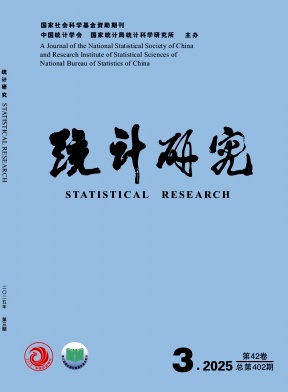
-
統(tǒng)計(jì)研究
級(jí)別:北大核心,JST,CSSCI,WJCI,AMI權(quán)威
ISSN:1002-4565
刊期:進(jìn)入查看
-

-
中國(guó)人口·資源與環(huán)境
級(jí)別:北大核心,JST,CSCD,CSSCI,WJCI
ISSN:1002-2104
刊期:進(jìn)入查看
-
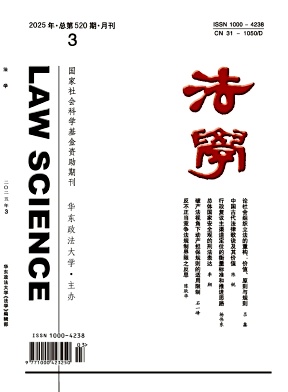
-
法學(xué)
級(jí)別:北大核心,CSSCI,AMI核心,社科基金資助期刊,
ISSN:1000-4238
刊期:進(jìn)入查看
-
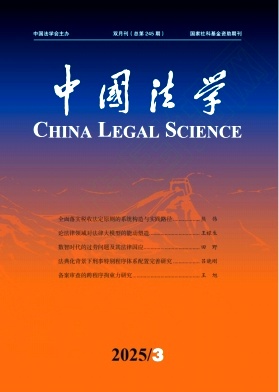
-
中國(guó)法學(xué)雜志
級(jí)別:北大核心,CSSCI,AMI權(quán)威,社科基金資助期刊,
ISSN:1003-1707
刊期:進(jìn)入查看
-
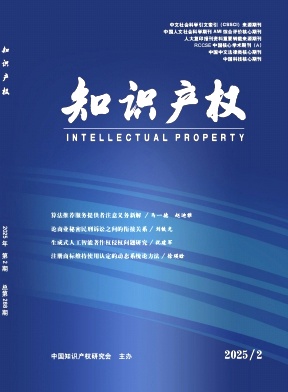
-
知識(shí)產(chǎn)權(quán)
級(jí)別:北大核心,CSSCI擴(kuò)展版,AMI核心
ISSN:1003-0476
刊期:進(jìn)入查看
-
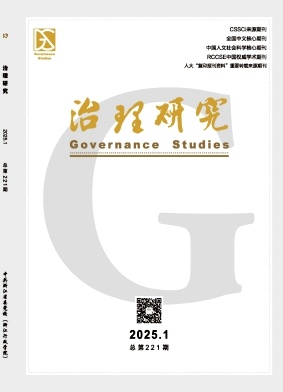
-
治理研究
級(jí)別:北大核心,CSSCI,AMI核心
ISSN:2097-5406
刊期:進(jìn)入查看
-
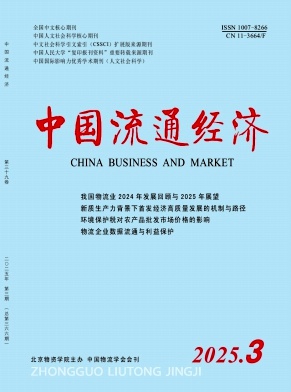
-
中國(guó)流通經(jīng)濟(jì)
級(jí)別:北大核心,CSSCI擴(kuò)展版,AMI核心
ISSN:1007-8266
刊期:進(jìn)入查看
-
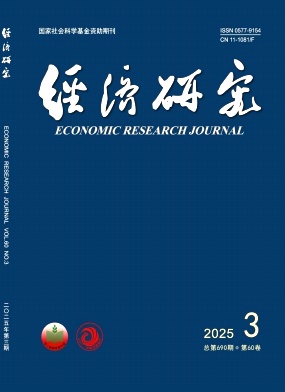
-
經(jīng)濟(jì)研究雜志
級(jí)別:北大核心,CSSCI,AMI頂級(jí),社科基金資助期刊,
ISSN:0577-9154
刊期:進(jìn)入查看
-

-
高等工程教育研究雜志
級(jí)別:北大核心,CSSCI,AMI核心
ISSN:1001-4233
刊期:進(jìn)入查看
-
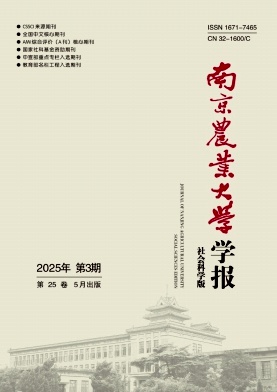
-
南京農(nóng)業(yè)大學(xué)學(xué)報(bào)·社會(huì)科學(xué)版雜志
級(jí)別:北大核心,CSSCI,AMI核心,社科基金資助期刊,
ISSN:1671-7465
刊期:進(jìn)入查看
-

-
新疆師范大學(xué)學(xué)報(bào)·哲學(xué)社會(huì)科學(xué)版雜志
級(jí)別:北大核心,CSSCI,AMI核心,社科基金資助期刊,
ISSN:1005-9245
刊期:進(jìn)入查看
SCI核心期刊推薦
-

-
Scientific Reports
數(shù)據(jù)庫(kù):SCI
ISSN:2045-2322
刊期:進(jìn)入查看
-

-
ACTA RADIOLOGICA
數(shù)據(jù)庫(kù):SCI
ISSN:0284-1851
刊期:進(jìn)入查看
-

-
Materials Today Communications
數(shù)據(jù)庫(kù):SCI
ISSN:2352-4928
刊期:進(jìn)入查看
-
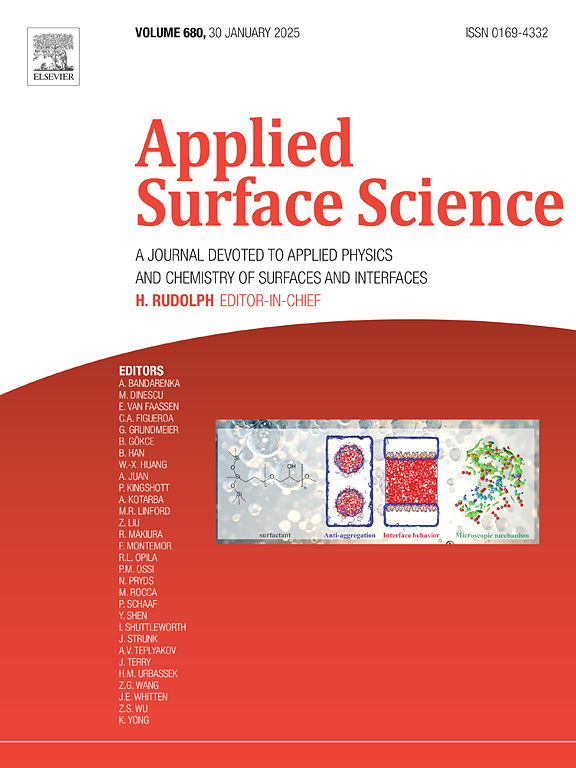
-
APPLIED SURFACE SCIENCE
數(shù)據(jù)庫(kù):SCI
ISSN:0169-4332
刊期:進(jìn)入查看
-
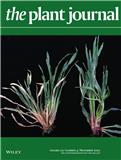
-
PLANT JOURNAL
數(shù)據(jù)庫(kù):SCI
ISSN:0960-7412
刊期:進(jìn)入查看
-

-
PLANT DISEASE
數(shù)據(jù)庫(kù):SCI
ISSN:0191-2917
刊期:進(jìn)入查看
-

-
SCIENCE OF THE TOTAL ENVIRONMENT
數(shù)據(jù)庫(kù):SCI
ISSN:0048-9697
刊期:進(jìn)入查看
-
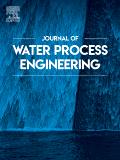
-
JOURNAL OF WATER PROCESS ENGINEERING
數(shù)據(jù)庫(kù):SCI
ISSN:2214-7144
刊期:進(jìn)入查看
-

-
BMC BIOLOGY
數(shù)據(jù)庫(kù):SCI
ISSN:1741-7007
刊期:進(jìn)入查看
-
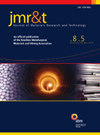
-
Journal of Materials Research and Technology-JMR&T
數(shù)據(jù)庫(kù):SCI
ISSN:2238-7854
刊期:進(jìn)入查看
-

-
ACS Omega
數(shù)據(jù)庫(kù):SCI
ISSN:2470-1343
刊期:進(jìn)入查看
-
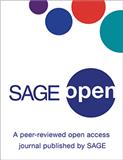
-
SAGE Open
數(shù)據(jù)庫(kù):SCI
ISSN:2158-2440
刊期:進(jìn)入查看